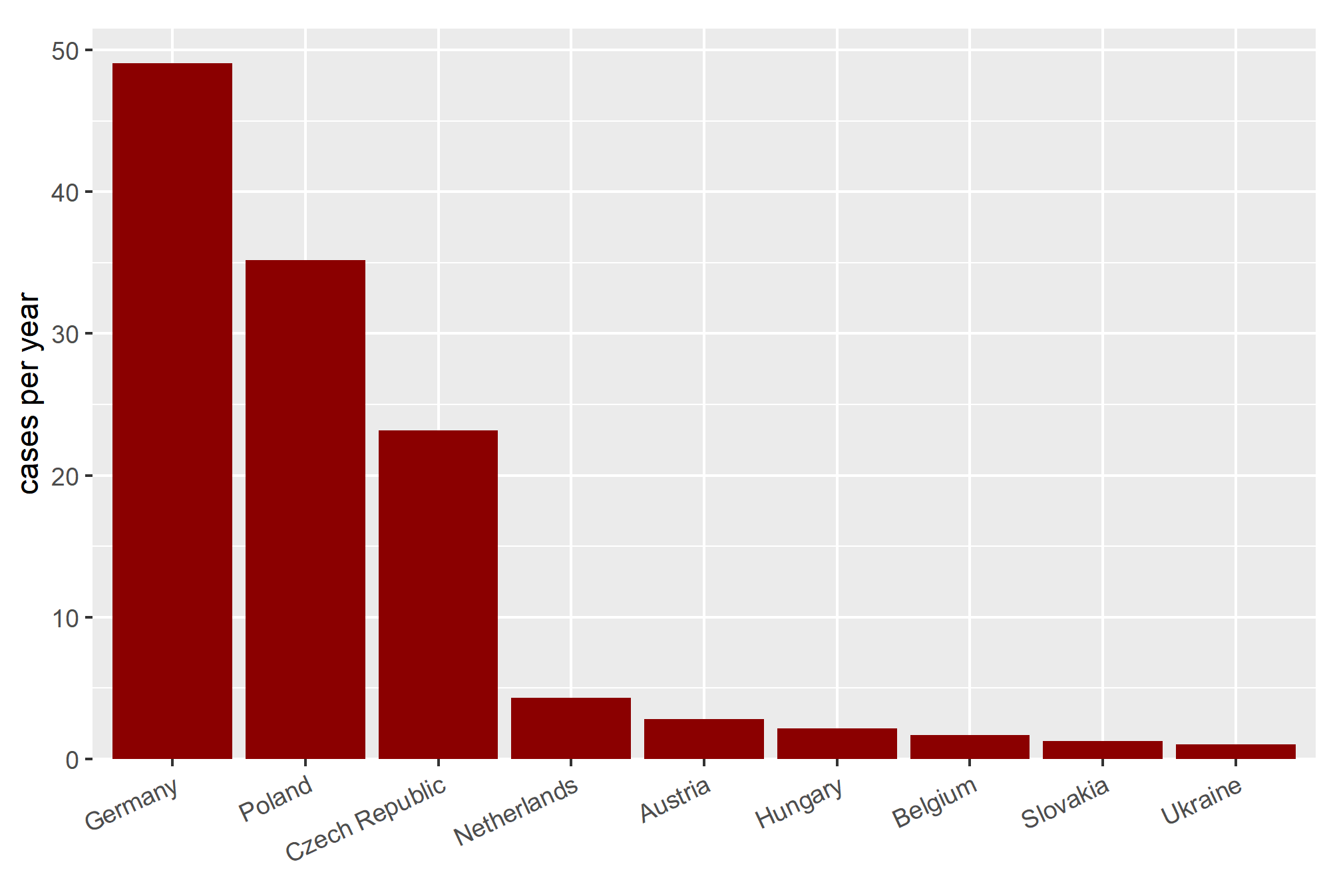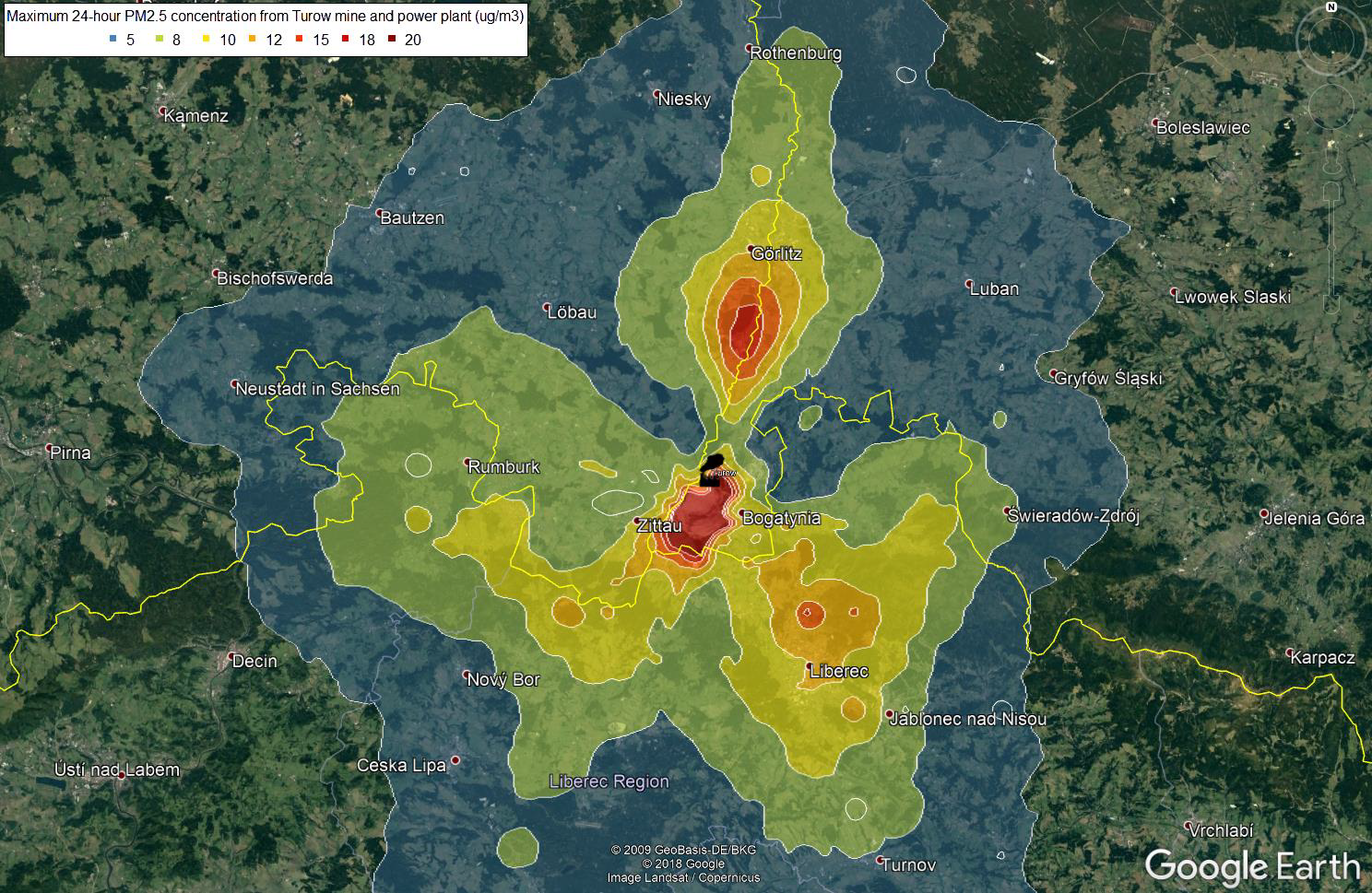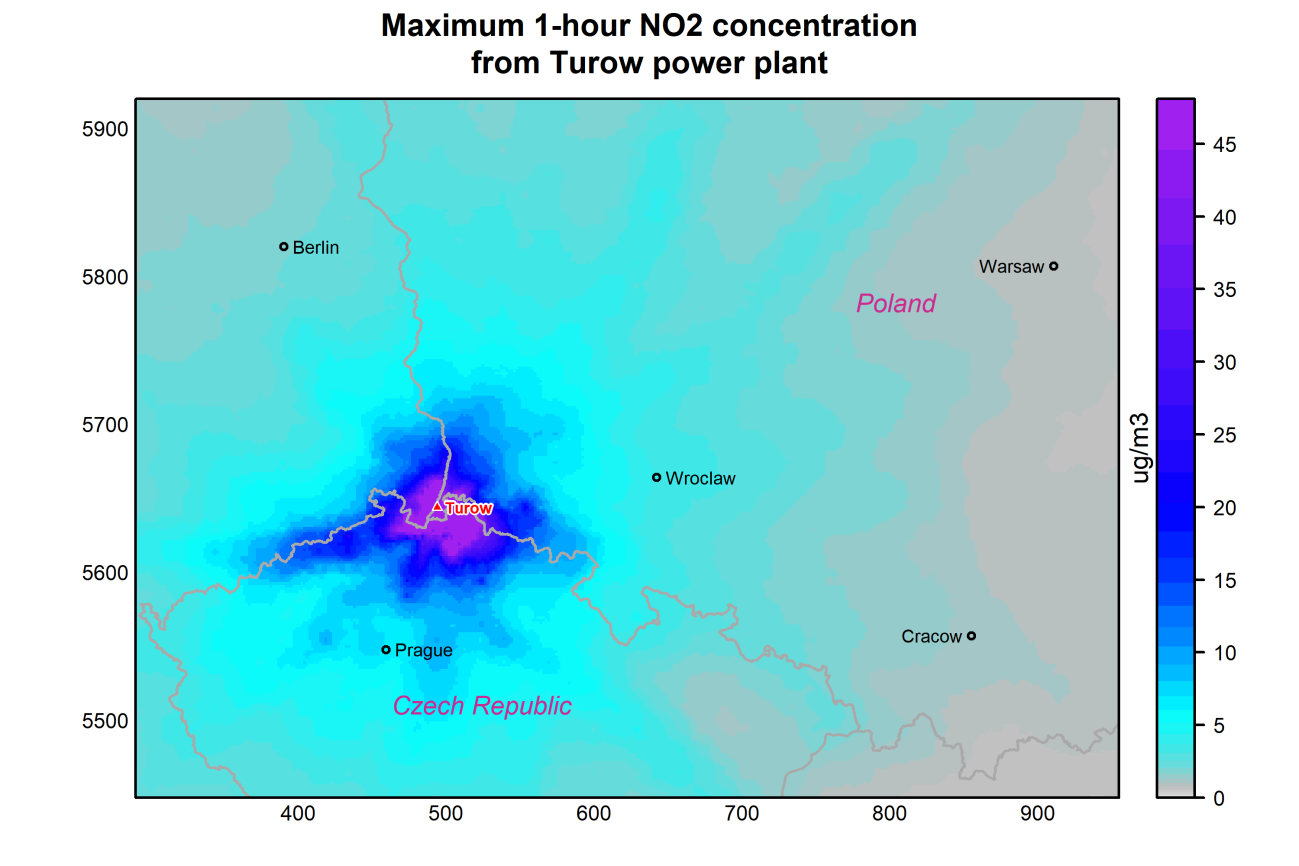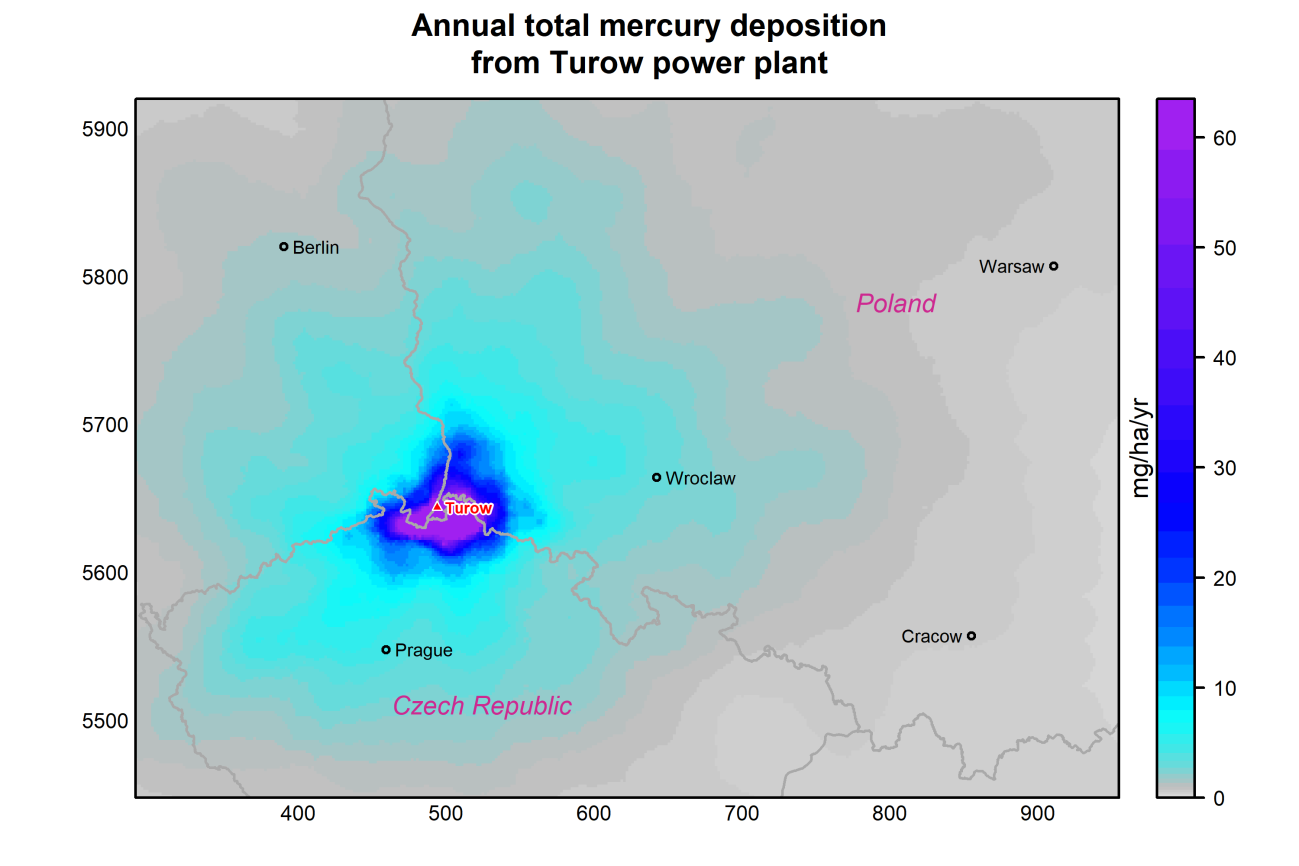 Air quality, toxic and health impacts of the Turow power plant
Air quality, toxic and health impacts of the Turow power plant
Lauri Myllyvirta, lead analyst
CREA is an independent research organisation focused on revealing the trends, causes, and health impacts, as well as the solutions to air pollution.
Abstract
The Turow coal power plant is ranked the second most polluting industrial facility in Poland and the 7th in the entire European Union by the European Environment Agency (2014). The operator is currently applying for an extension of the lignite mine that supplies fuel to the power plant, extending the lifetime of both the mine and the plant.
Air pollutant emissions from the plant expose a large number of people to PM2.5, NO2 and mercury pollution, increasing the risk of diseases such as stroke, lung cancer, heart and respiratory diseases in adults, as well as respiratory infections and harm to cognitive development in children. In 2017, air pollutant emissions from the plant and the lignite mine were responsible for an estimated 120 premature deaths. The plant also has substantial transboundary impacts, as 80 out of the 120 excess deaths take place outside Poland’s borders, with Germany and Czechia most affected.
Results: Air Quality and Health
This case study provides a detailed analysis of the air quality, toxic and health impacts of the coal power plant and lignite mine in Turow in 2017, combining official emission data with detailed atmospheric modeling and existing epidemiological data and literature.
The air quality impacts of emissions from the Turow power plant and mine were modeled using the CALPUFF dispersion model, which uses detailed hourly data on wind and other atmospheric conditions to track the transport, chemical transformation and deposition of pollutants, and is widely used to assess the short and long range impacts of emissions from industrial point sources and area sources. The model predicts the increases in hourly, daily and annual pollutant concentrations caused by emissions from the studied source.
Emissions from the power plant contribute to ambient concentrations of PM2.5, NO2 and SO2, while the dust emissions from the mine increase ambient levels of PM2.5 and PM10, causing increases in the risk of both acute and chronic diseases and symptoms.
The effects of these increases in pollutant concentrations on public health were quantified following the recommendations of WHO for health impact assessment of air pollution in Europe. The results indicate that the plant and mine were responsible for approximately 120 premature deaths in 2017, along with 2100 asthma attacks, 60 new cases of chronic bronchitis, 110 hospital admissions and 51,000 days of sick leave from work per year.
Based on the modeling results, combined emissions from the power plant and mine expose approximately 290,000 people to 24-hour maximum PM2.5 concentrations of 10ug/m3 or more, including in Liberec, Görlitz and Zittau. Combined with other emissions sources in the region, these emissions are highly likely to contribute to exceedances of the World Health Organization guideline of 25ug/m3 on 24-hour average basis.
The health impacts of the power plant will be mitigated to an extent by compliance with the new EU emission limits from early 2020s onwards (Best Available Technology Reference standards for Large Combustion Plants). However, new power generating units are being added at the plant, and the Environmental Impact Assessment of the lignite mine extension projects increased lignite production, which implies increased air pollutant emissions from mine operation as well as from lignite combustion at the power plant.
Table 1. Estimated health impacts associated with the emissions from Turow power plant and mine.

Figure 1. Projected premature deaths per year by country attributed to emissions from the Turow power plant.

Figure 2. Projected contributions from the Turow power plant and mine to ambient PM2.5 levels.



Figure 3. Projected contributions from the Turow power plant to ambient NO2 levels.

 Results: Mercury Deposition
Results: Mercury Deposition
The Turow power plant reported mercury emissions of 334 kilograms in 2017.
Approximately 40% of the mercury emitted by the plant is estimated to be deposited into land and freshwater ecosystems in the region. Under 2017 reported emissions, this amounts to approximately 120kg per year. Mercury deposition rates as low as 125mg/ha/year can lead to accumulation of unsafe levels of mercury in fish (Swain et al 1992). The plant is estimated to cause mercury deposition above 125mg/ha/yr in an area of 440km2 to the south and east of the plant, with a population of approximately 50,000 people (Figure 4), in Poland, Germany and Czechia. Approximately 35% of the projected deposition, or 40kg per year, takes place in Poland, 27% in Czechia and 23% in Germany.
While actual mercury uptake and biomagnification depends very strongly on local chemistry, hydrology and biology, the predicted mercury deposition rates are a cause for serious concern and an assessment of the impacts and of measures to reduce mercury emissions is needed urgently.
Figure 4. Projected mercury deposition from the Turow power plant.


Materials and methods
Annual emissions from the plant in 2017 were obtained from the E-PRTR emissions database. Annual air quality and health impacts were modeled based on these annual average emissions rates. For short term air quality impacts, the annual emissions were assumed to be consistent with annual utilization of 4,400 full-load hours, estimated from the reported CO2 emissions, and short term impacts were assessed for the situation in which the plant is operating at full output.
Dust emissions from the mine and the lignite transport to the power plant were calculated based on annual lignite production of 7 million tonnes and EMEP default emission factors (EMEP/EEA 2016). Short-term air quality impacts were modeled using the highest projected output in the EIA, 11.5 million tonnes per year. The locations of the mine working face and transport route were identified from Google Earth satellite imagery; the working face was modeled as an area source and the transport rail line as a line source. The dust emissions in the model were doubled in dry summer conditions (24-hour mean relative humidity <65% and temperature >10oC).
Atmospheric dispersion modeling was carried out using version 7 (June 2015) of the CALPUFF modeling system. Meteorological and geophysical data for the simulations was generated with the TAPM model, developed by Australia’s national science agency CSIRO. A set of nested grids with a 50×50 grid size and 30km, 7.5km and 2.5km horizontal resolutions and 12 vertical levels was used, centered on the power plant.
The CALPUFF model performs a detailed simulation of the rise of the plume from the power plant stack, through which the emissions are discharged; the characteristics of the modeled stacks are given in Table 2.
For emissions from main boilers of the power plants, 30% of emitted fly ash was assumed to be PM2.5, and 37.5% PM10, in line with the U.S. EPA AP-42 default value for electrostatic precipitators. Chemical transformation of sulphur and nitrogen species was modeled using the ISORROPIA chemistry module within CALPUFF, and required data on ambient ozone levels was processed from measurements reported by the Polish, Czech and German governments to the European Environmental Agency. Other required atmospheric chemistry parameters (monthly average ammonia and H2O2 levels) for the modeling domain were imported into the model from baseline simulations using the MSC-W atmospheric model (Huscher et al 2017). The CALPUFF results were reprocessed using the POSTUTIL utility to repartition different nitrogen species (NO, NO2, NO3 and HNO3) based on background ammonia concentrations.
The health impacts resulting from the increase in PM2.5 concentrations were evaluated by assessing the resulting population exposure, based on high-resolution gridded population data for 2015 from CIESIN (2017), and then applying the health impact assessment recommendations of WHO HRAPIE (2013) as implemented in Huescher et al (2017), and with low birth weight births quantified using the concentration-response relationship established by Dadvand et al (2013). Baseline mortality for different causes and age groups for Poland and neighboring countries were obtained from Global Burden of Disease results (IHME 2018).
Table 2. Key data on the Turow power plant used for modeling.

Table 3.Air emissions from the Turow power plant in 2017 reported to the E-PRTR system.

References
Center for International Earth Science Information Network (CIESIN), Columbia University, 2017. Gridded Population of the World, Version 4 (GPWv4): Population Density, Revision 10. Palisades, NY: NASA Socioeconomic Data and Applications Center (SEDAC). https://doi.org/10.7927/H4DZ068D.
Dadvand P et al. 2013: Maternal Exposure to Particulate Air Pollution and Term Birth Weight: A Multi-Country Evaluation of Effect and Heterogeneity. Environmental Health Perspectives. http://ehp.niehs.nih.gov/pdf-files/2013/Feb/ehp.1205575.pdf
EMEP/EEA 2016: Air pollutant emission inventory guidebook 2016. CLRTAP & European Environment Agency. European Environment Agency (EEA) 2014: Costs of air pollution from European industrial facilities 2008–2012 — an updated assessment. EEA Technical report No 20/2014. https://www.eea.europa.eu/publications/costs-of-air-pollution-2008-2012
Huscher J, Myllyvirta L and Gierens R 2017: Modellbasiertes Health Impact Assessment zu grenzüberschreitenden Auswirkungen von Luftschadstoffemissionen europäischer Kohlekraftwerke. Umweltmedizin – Hygiene – Arbeitsmedizin Band 22, Nr. 2 (2017) https://www.ecomed-umweltmedizin.de/leseproben/self/umweltmedizin–hygiene–arbeitsmedizin-band-22-nr-2-2017-.pdf
Institute for Health Metrics and Evaluation (IHME) 2018: Global Burden of Disease Study 2017 (GBD 2017) Results. Seattle, United States. http://ghdx.healthdata.org/gbd-results-tool.
Swain EB et al 1992: Increasing Rates of Atmospheric Mercury Deposition in Midcontinental North America. Science 257:784-787.
World Health Organization (WHO) 2013: Health risks of air pollution in Europe-HRAPIE project. http://www.euro.who.int/__data/assets/pdf_file/0006/238956/Health_risks_air_pollution_HRAPIE_project.pdf?ua=1